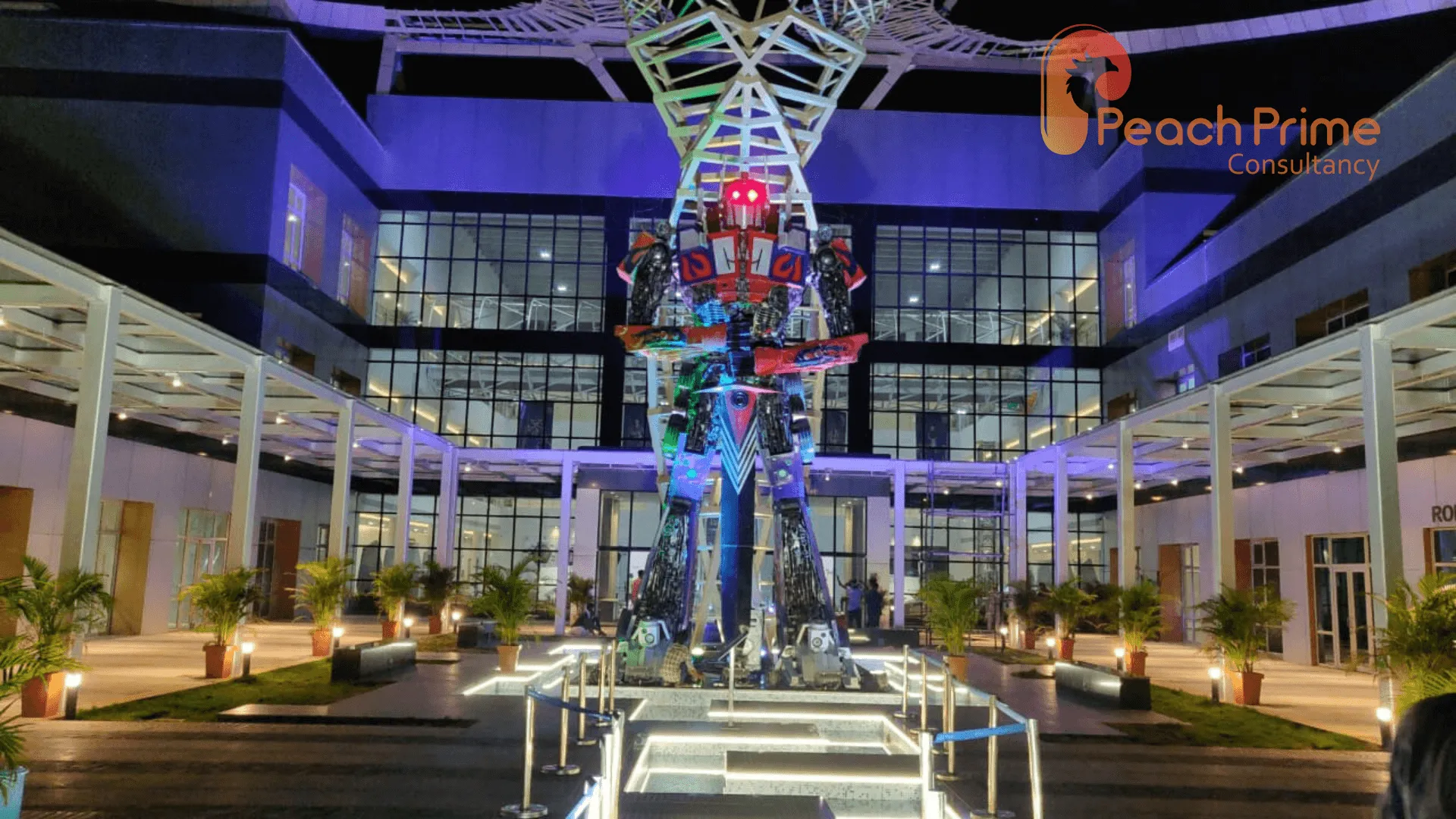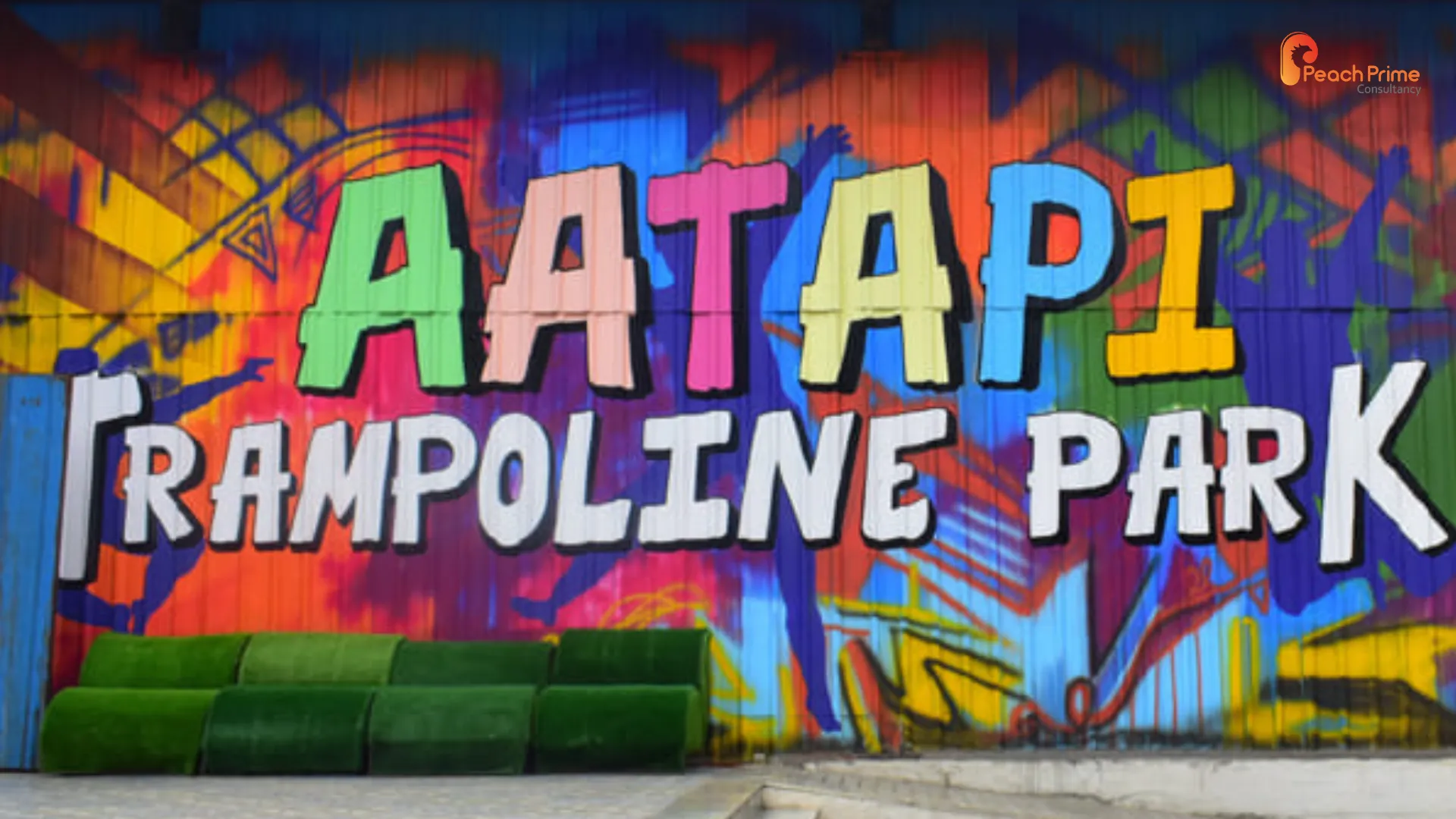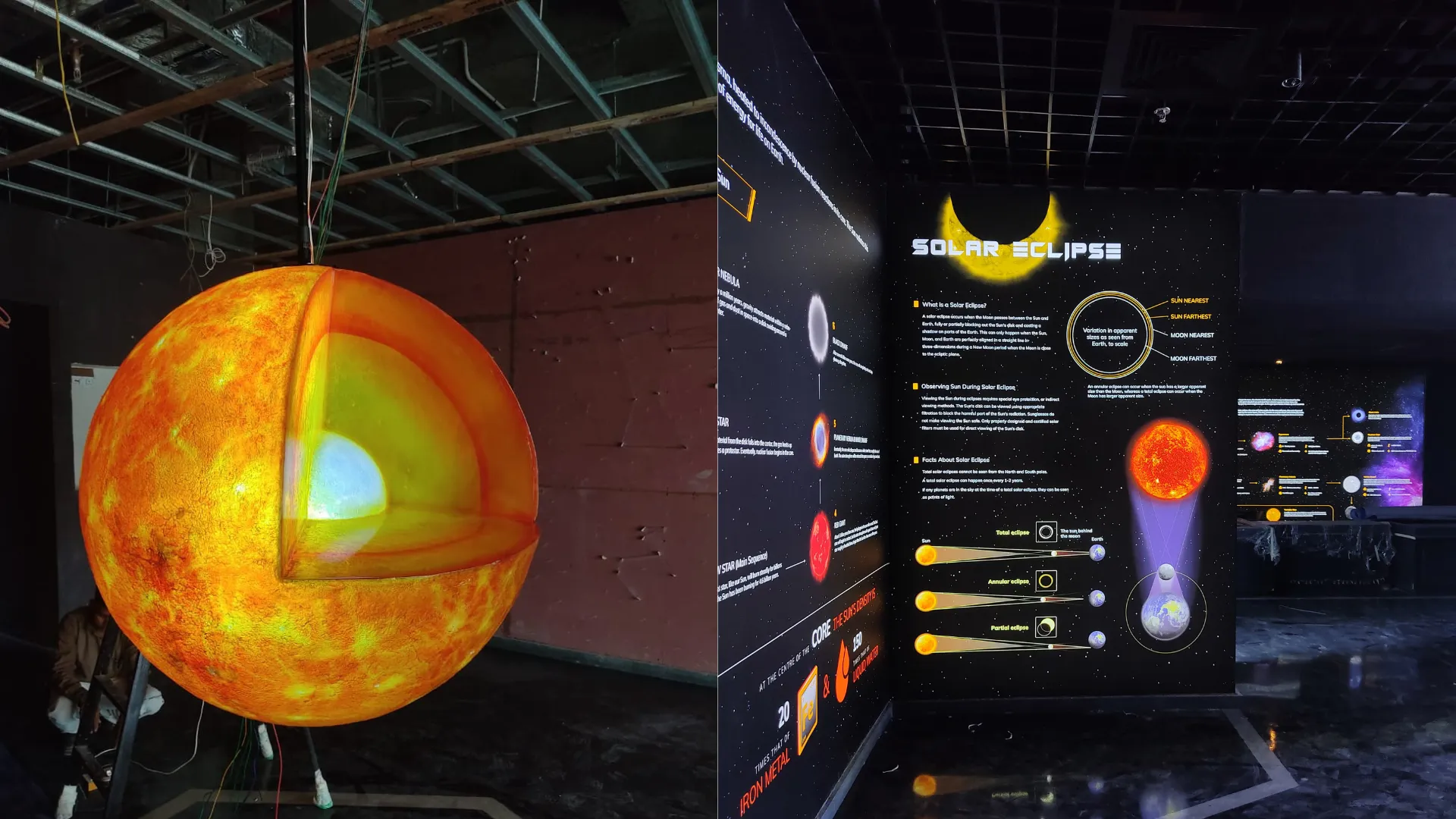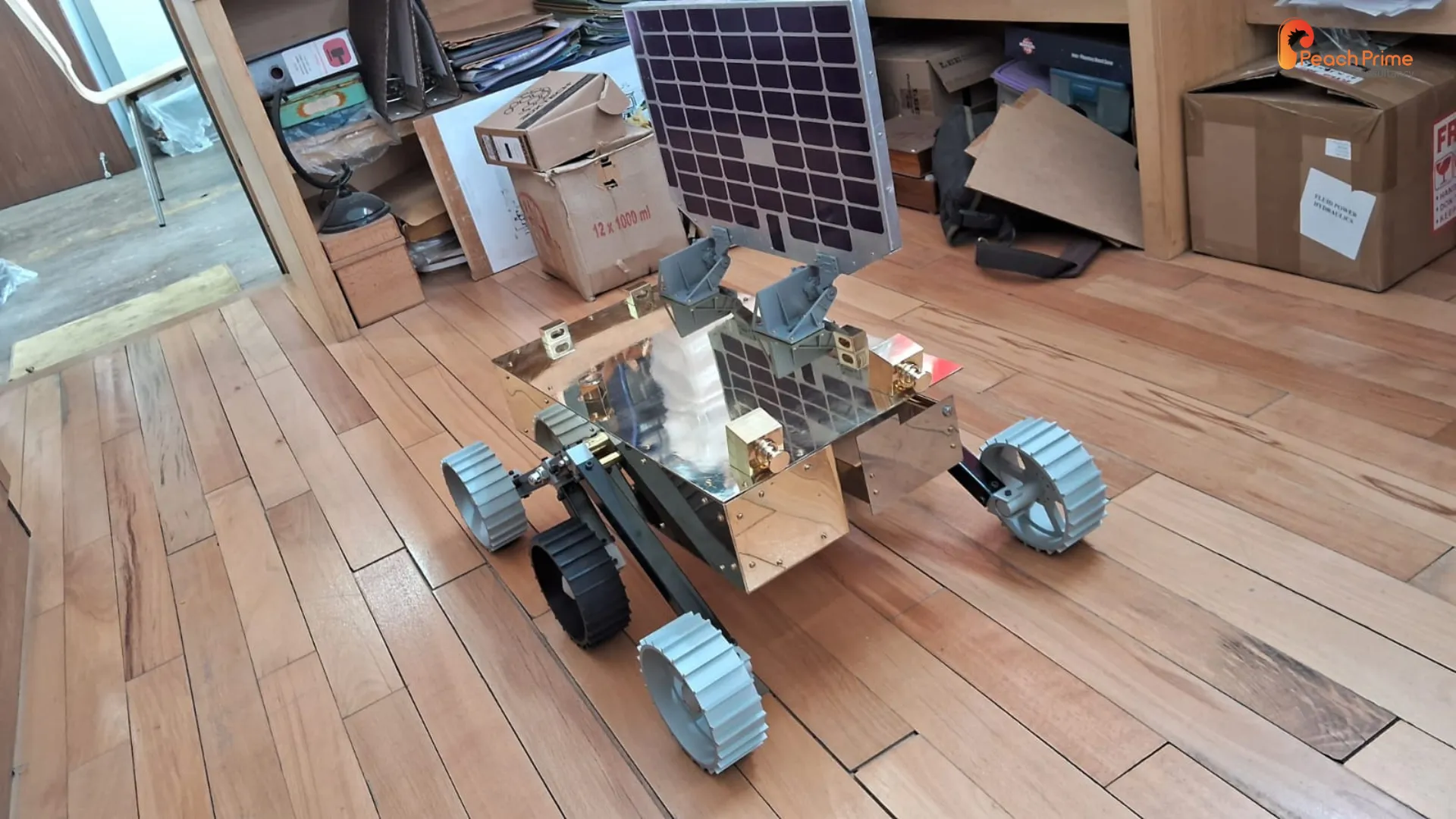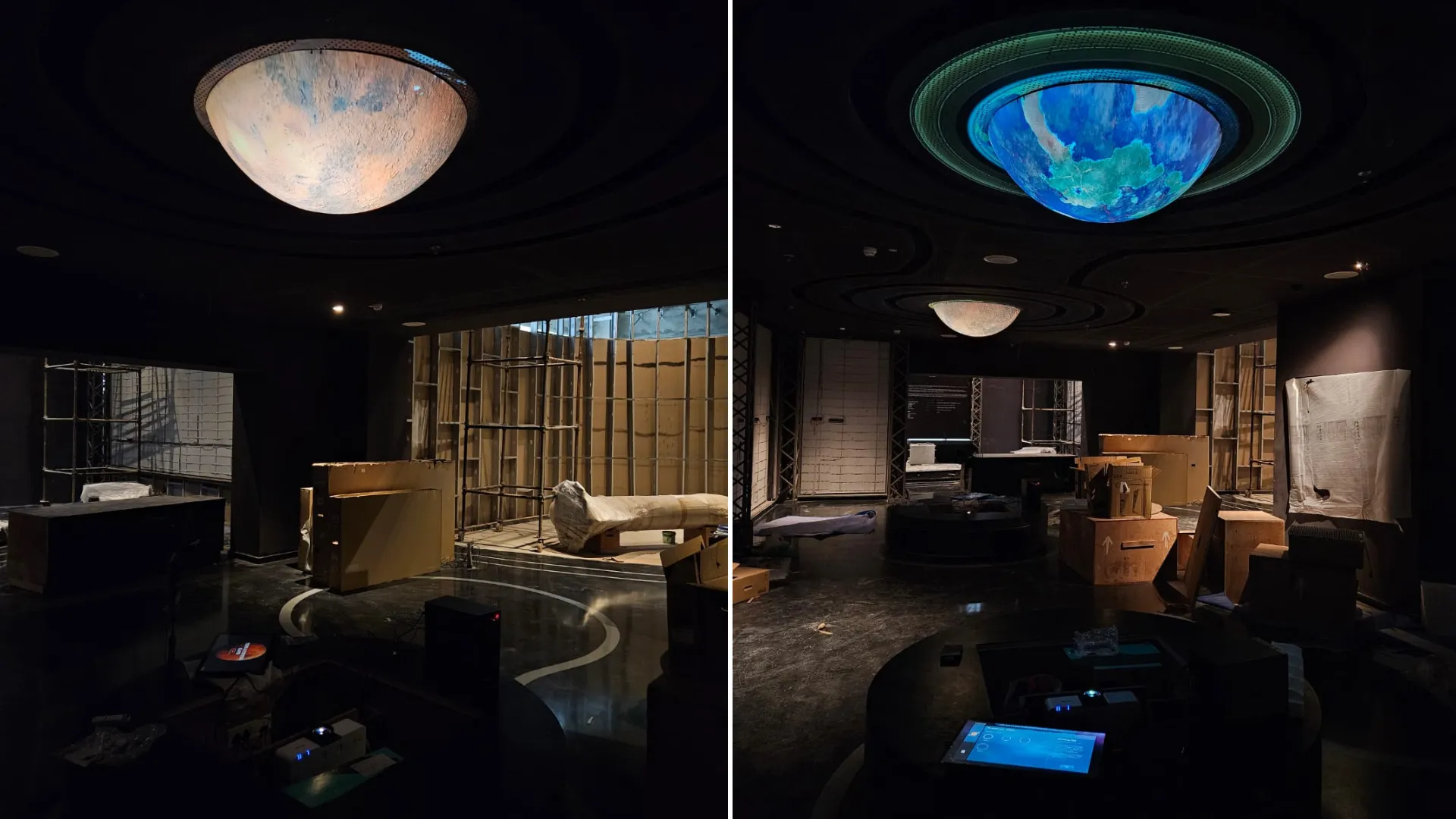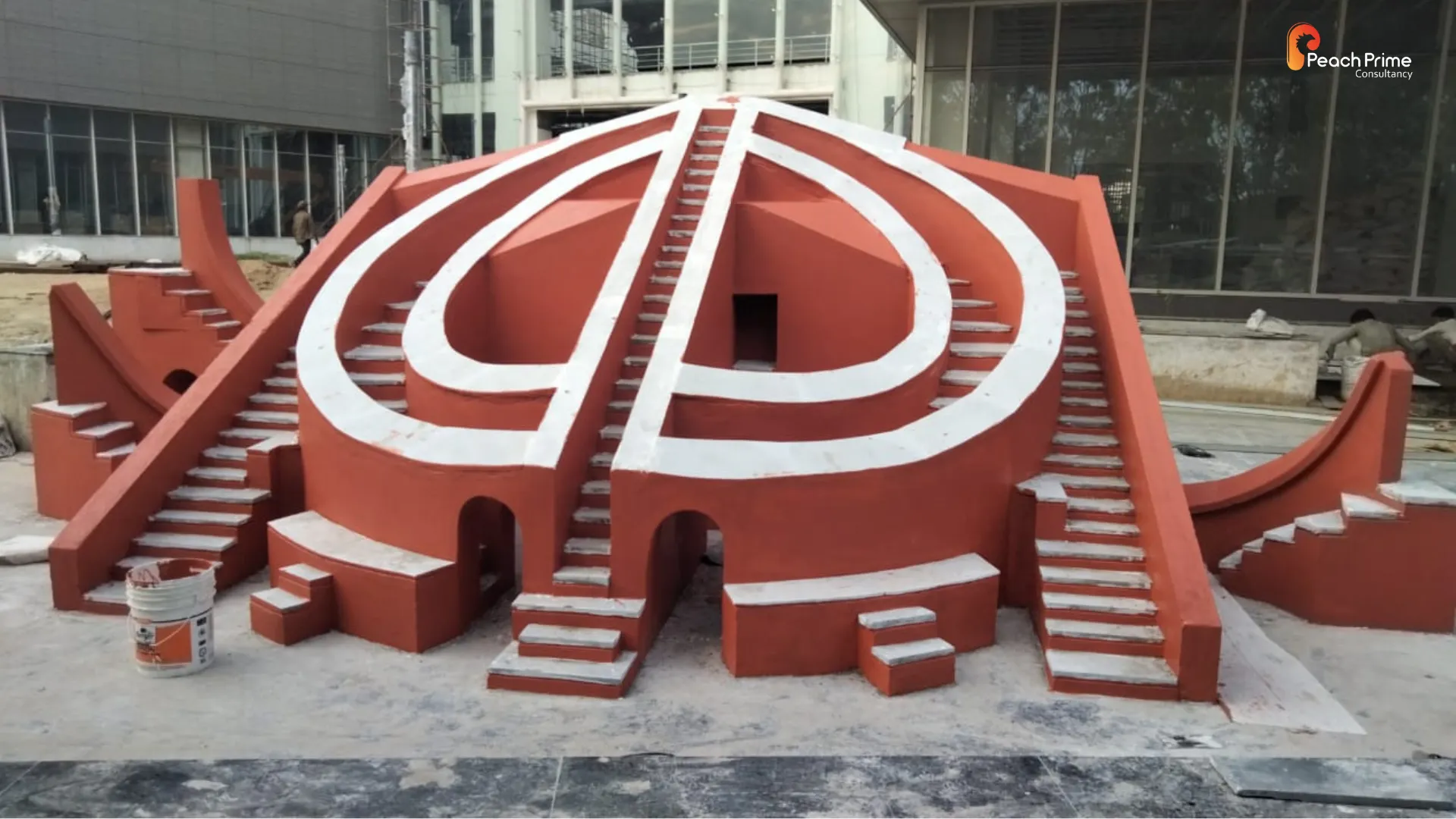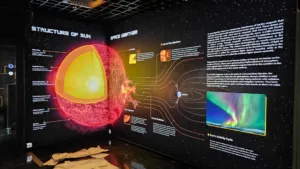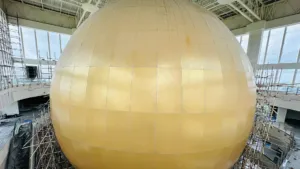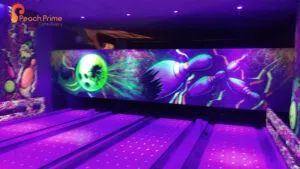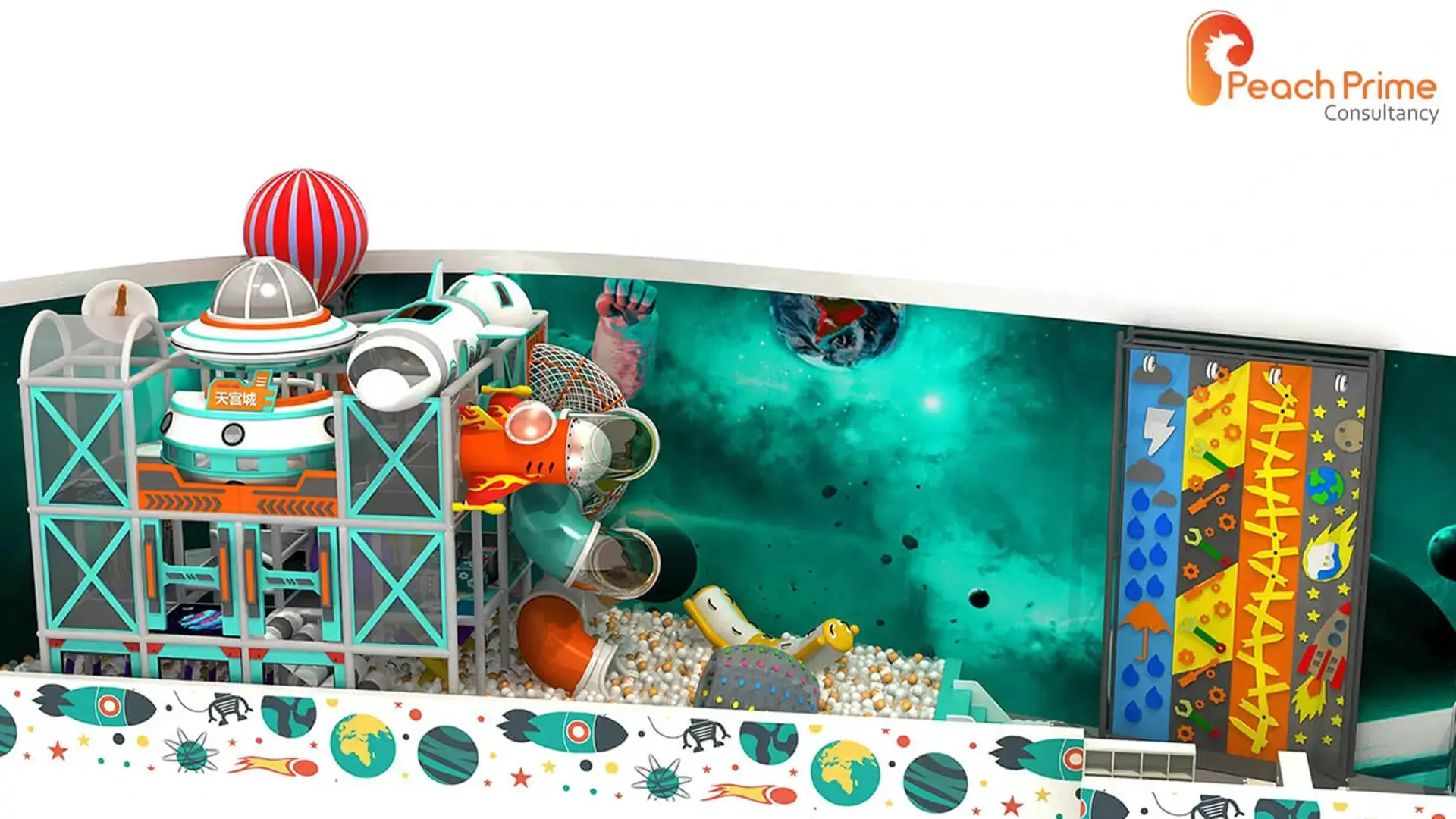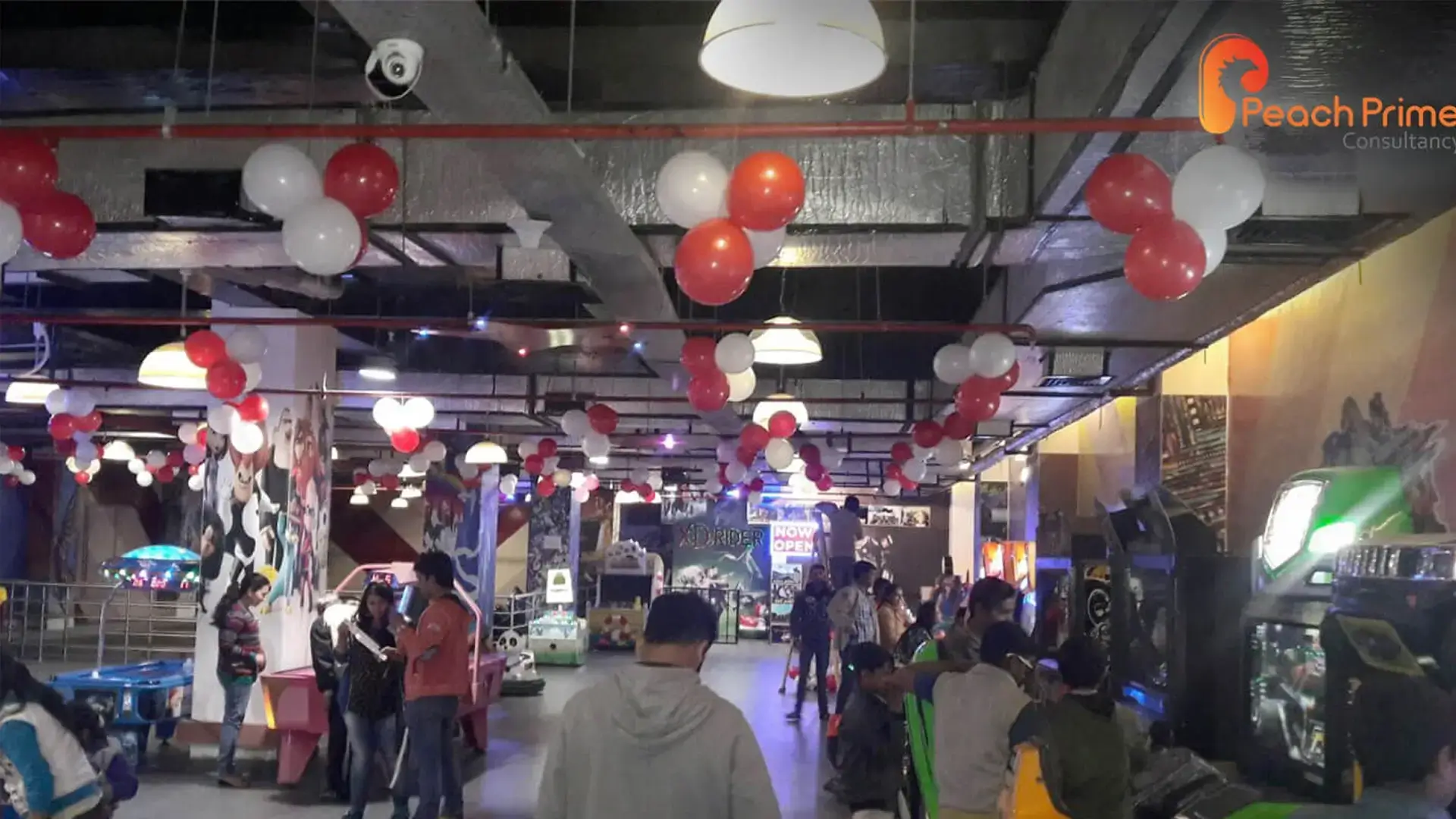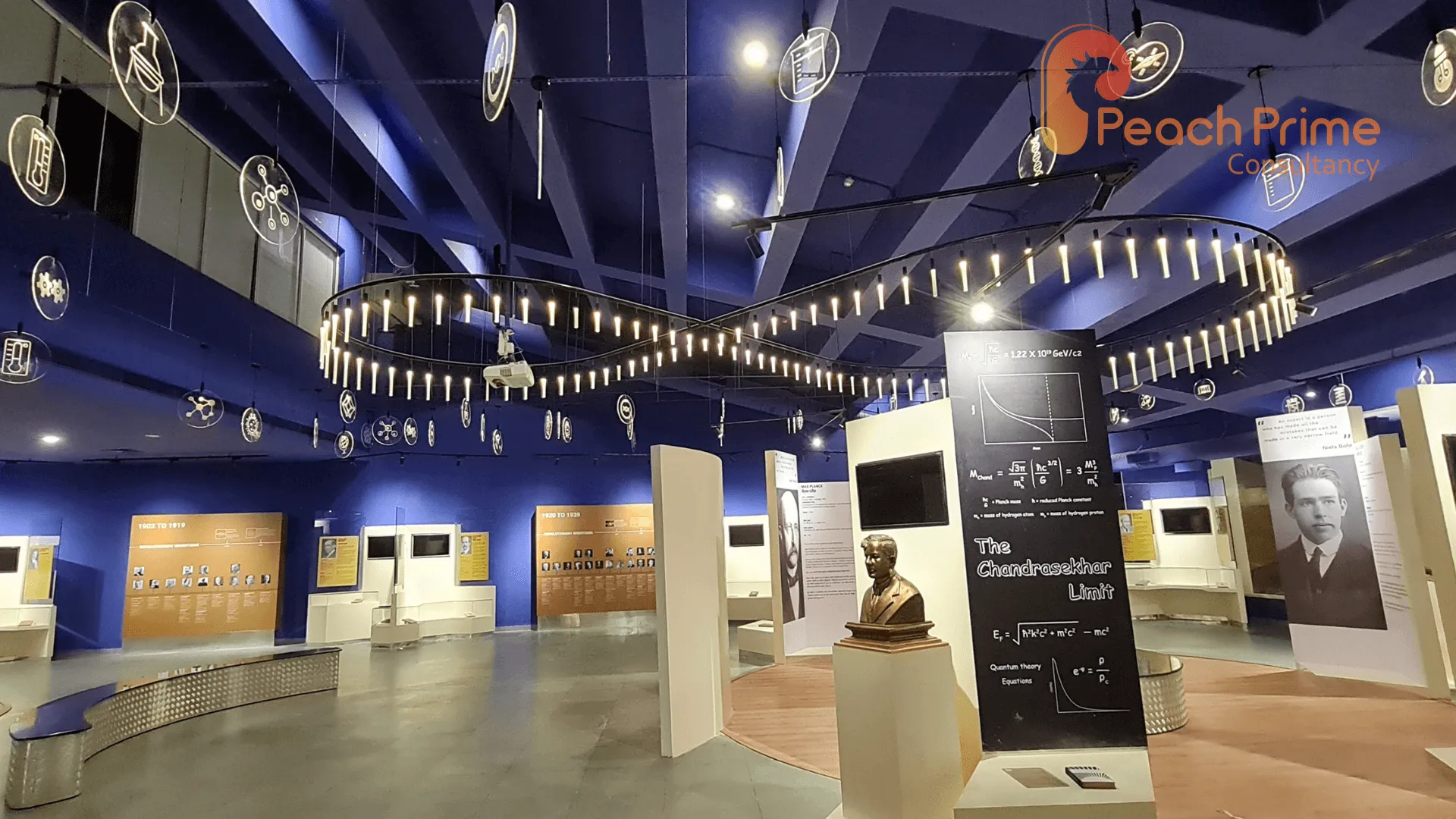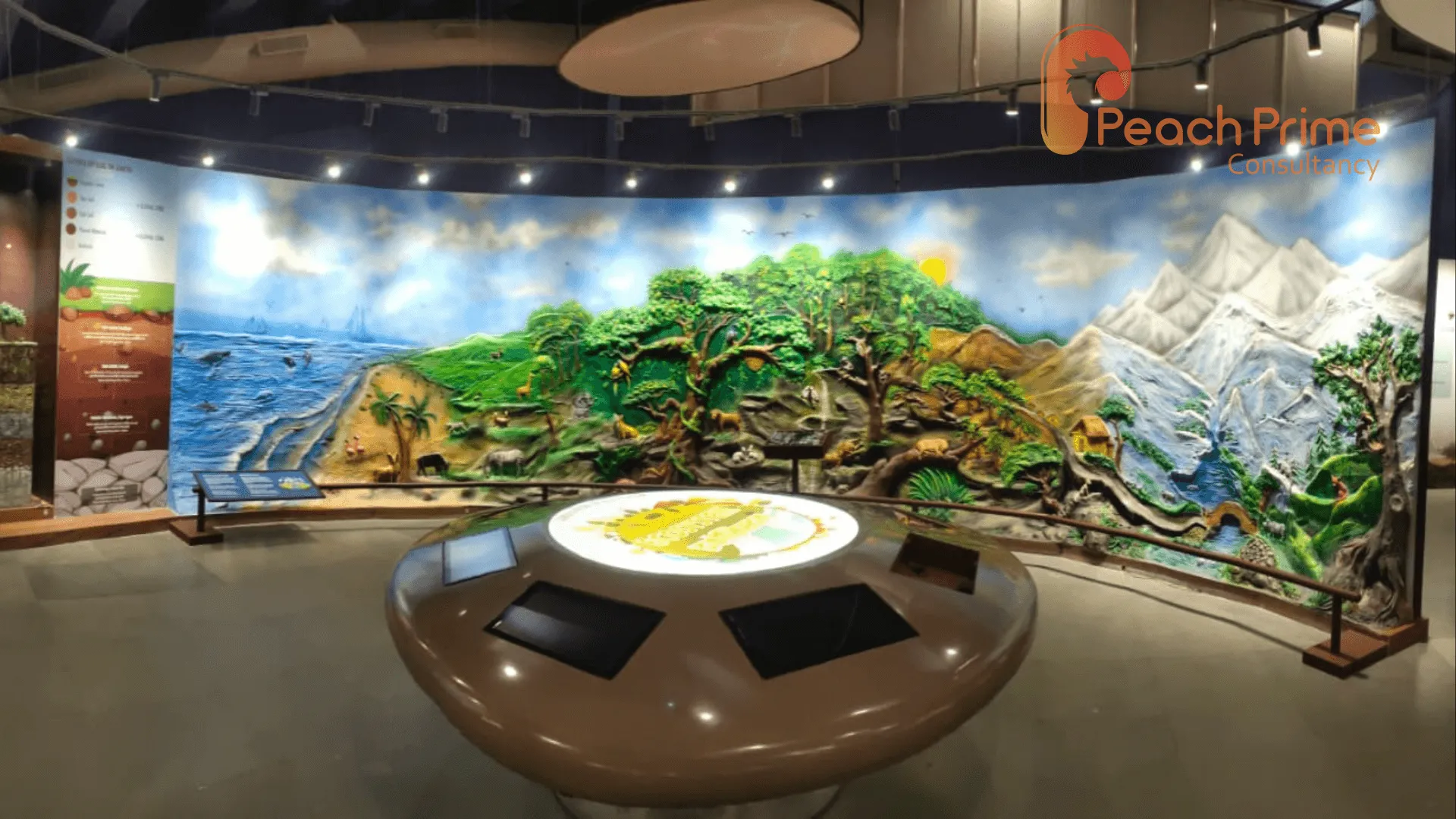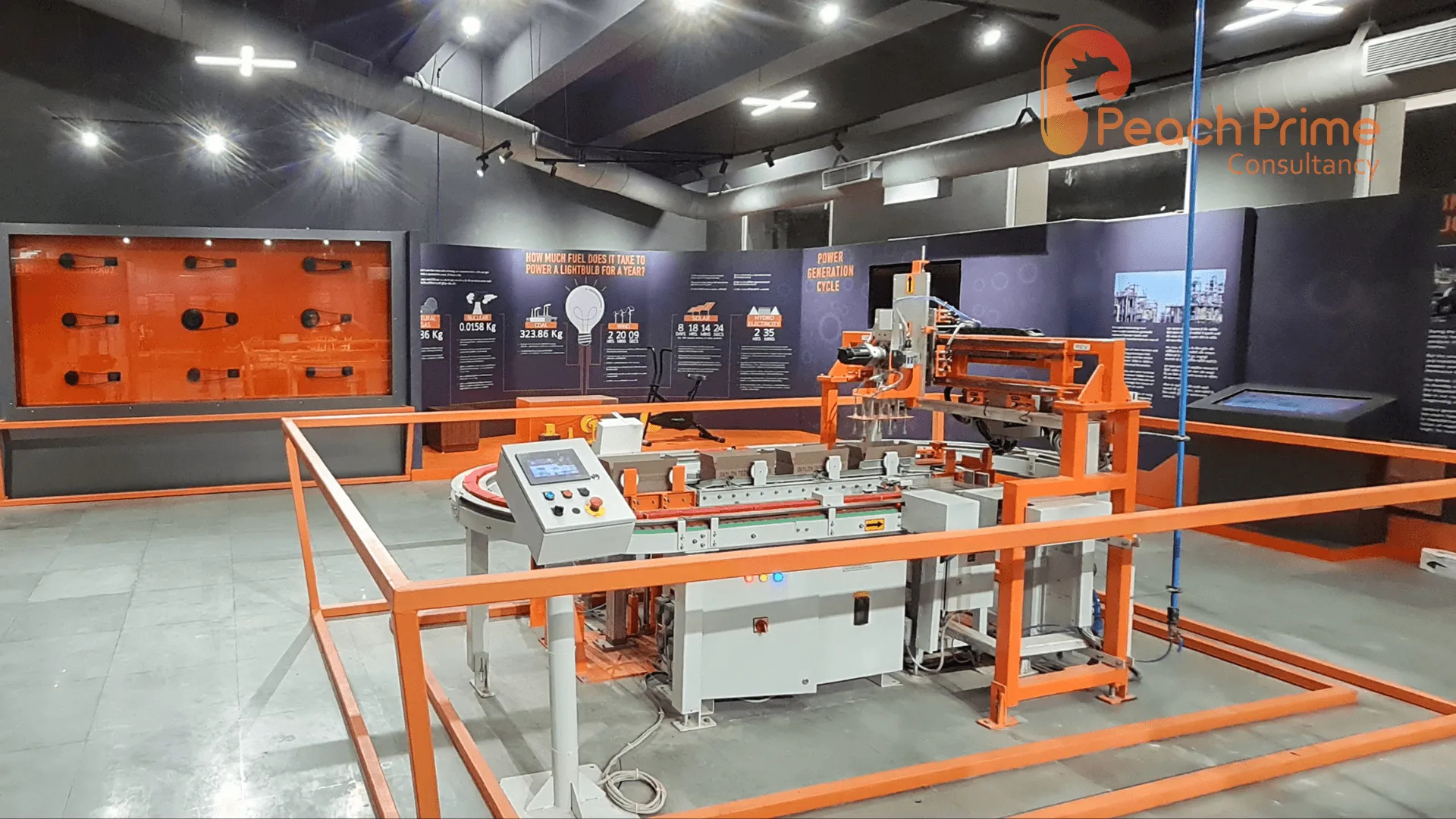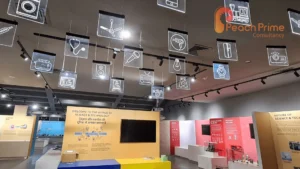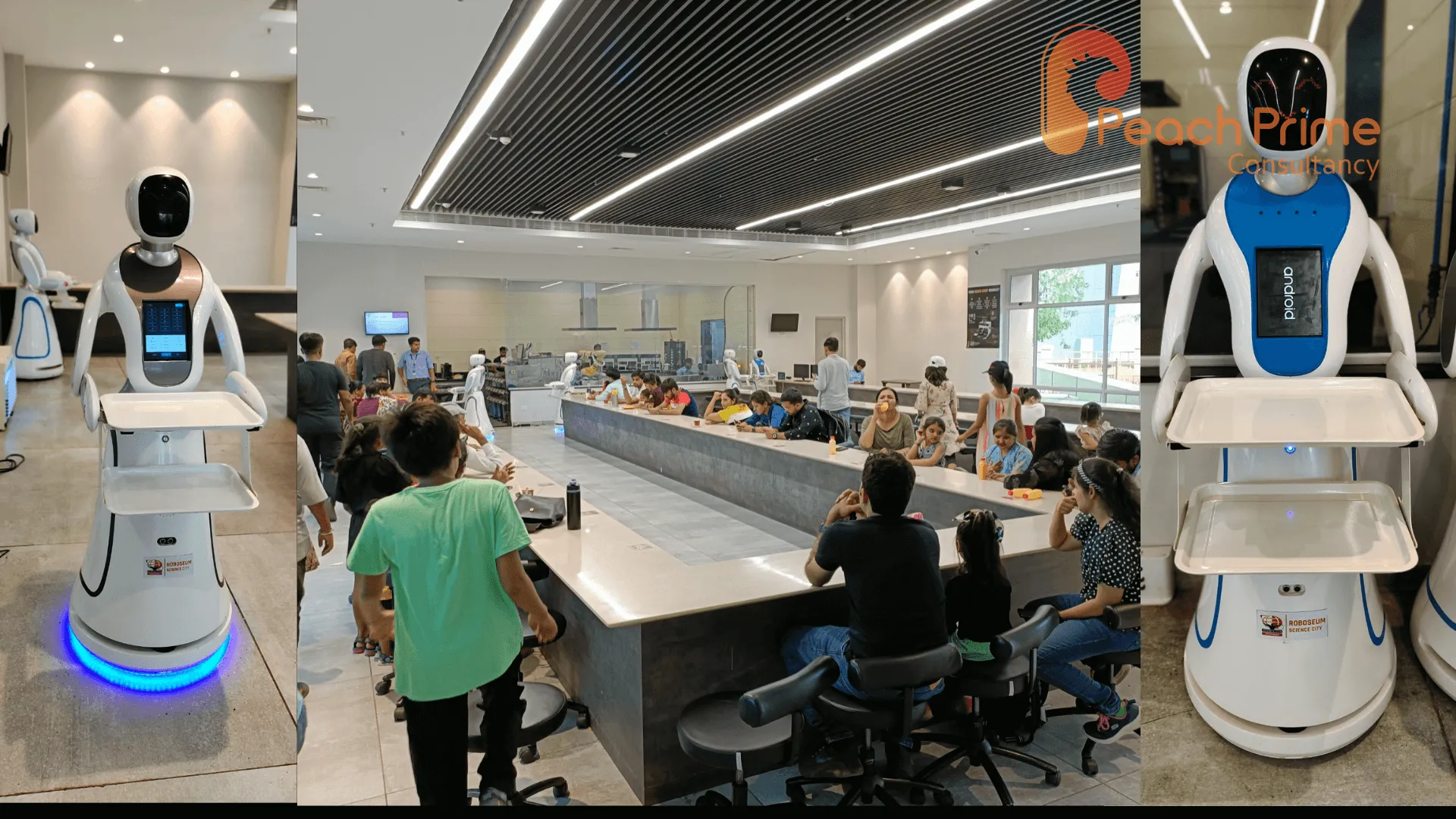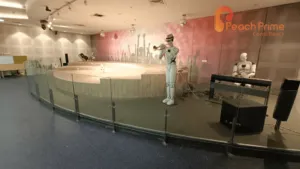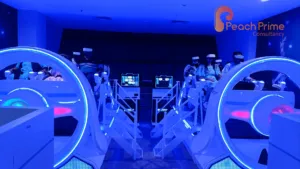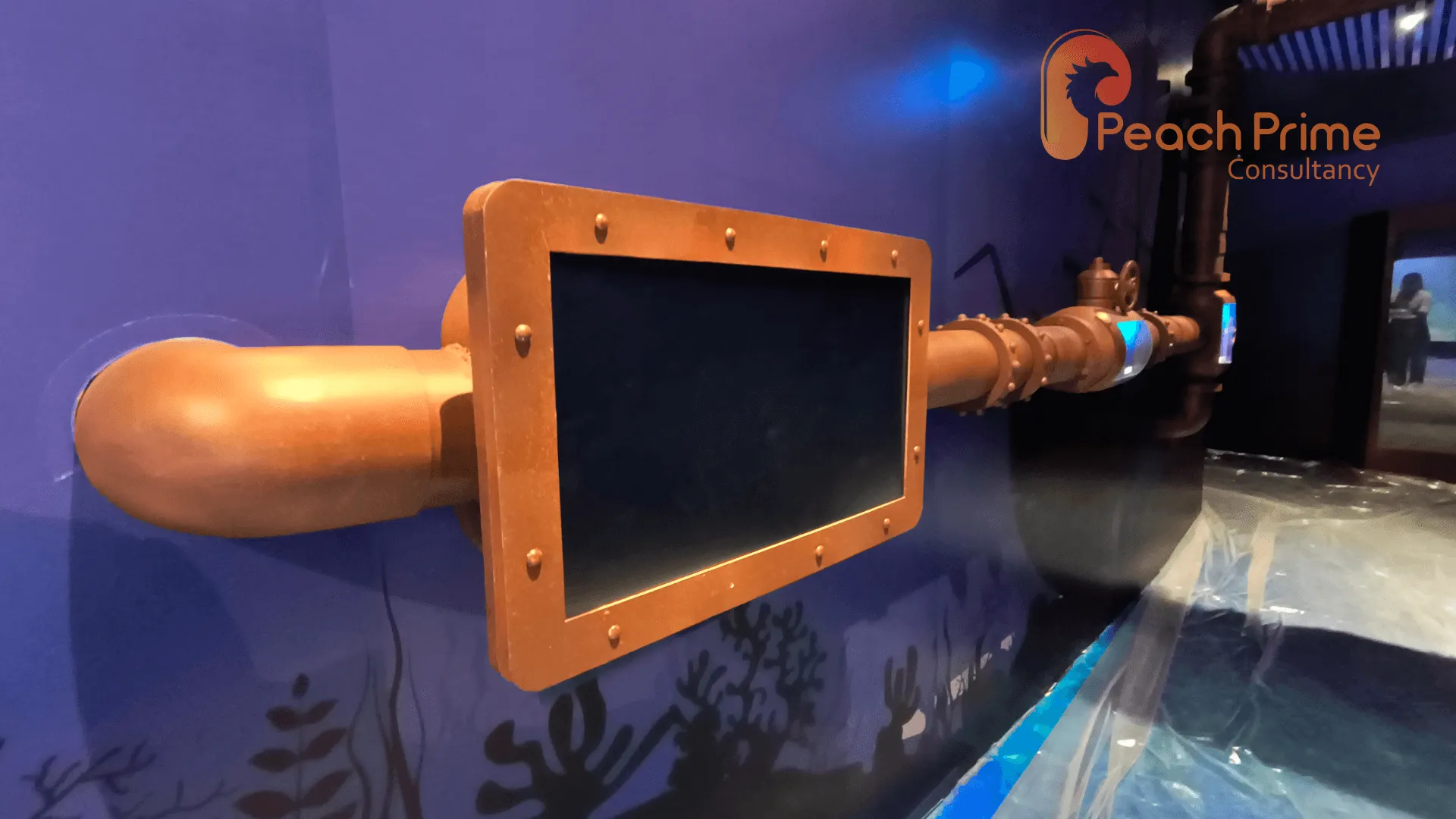Dodge, weave, and conquer the laser field — take on the mission of a lifetime.
Overview
Laser Tag is a proven, high-impact attraction that consistently serves as an anchor experience in Family Entertainment Centers (FECs), arcades, malls, and entertainment complexes. Players don electronic vests and phasers and engage in strategic combat in a darkened, themed arena filled with obstacles, lighting effects, sound, and laser interactions.
With strong brand recognition, high throughput, and enduring appeal across age groups, Laser Tag is often considered a “must-have” attraction in a well-balanced FEC. When designed well, it drives foot traffic, boosts dwell time, and promotes repeat visits.
Target / Trending Keywords: laser tag arena, laser tag for FEC, laser tag experience, indoor laser tag, laser tag arena design, themed laser tag, anchor attraction laser tag.
What Is Laser Tag?
Laser Tag is a real-time, team-based or free-for-all combat game where players use infrared or similar technology to “tag” opponents and targets in a structured play environment. Each player wears a vest (or suit) with sensors; the phaser emits a beam that registers hits. The system tracks scores, health, and game parameters through a central control system.
A full session typically includes:
- Briefing / mission introduction – rules, safety, objectives
- Vesting / equipment setup – don vests, test phasers
- Gameplay – 7–12 minute matches in the arena
- Scoring & debrief – final results, leaderboards, replays
According to industry benchmarks, a typical laser tag game lasts around 10 minutes (excluding briefing and scoring)
Laser Tag arenas can be single-level or multi-level (with elevated structures / ASA – Area of Sport Activity) to increase engagement and capacity.
Key Features & System Components
- Battle Vests & Phasers
High-reliability vests with multiple IR sensors, audio / haptic feedback, and compatibility with modern laser tag systems. - Central Game Control System
Manages game logic, scorekeeping, weapon modes, team settings, diagnostics, and data analytics. - Themed Arena Structure & Obstacles
Maze walls, props, cover structures, lighted corridors, interactive zones, and vertical elements for tactical play. - Lighting, Sound & FX Integration
Blacklights, DMX LED effects, fog/haze, synchronized soundtracks, strobe and ambient lighting to enhance immersion (as emphasized in designing arena experiences) - Briefing & Vesting Rooms
Dedicated spaces for rules explanation, equipment fitting, and safety. - Safety & Compliance Systems
Emergency lighting, fail-safe shutdown, ventilation, observation / control line of sight, and local code adherence. - Interactive / Dynamic Elements
Game stations, power-up zones, moving walls or trap triggers, smart targets, or LED wall clusters that respond to in-game actions
Game Modes & Experience Variants
To keep the attraction fresh and varied, Laser Tag can support multiple modes:
- Team Deathmatch – classic team vs. team elimination
- Capture the Flag / Domination Zones – hold strategic points
- Free-for-All / Solo – everyone for themselves
- VIP / Escort Missions – protect or escort a player or object
- Last Survivor / Survival Mode – elimination until one remains
- Scenario / Narrative Mode – story-driven mission with twists
- Timed Rounds / Speed Rounds – fast-paced play variation
- Live Events / Tournaments – competitive matchups and leaderboards
Having modular modes allows operators to vary experiences daily and encourage repeater visits.
Benefits & Value Proposition
- Anchor Attraction & Traffic Driver
Laser Tag often becomes the centerpiece that draws visitors to the venue. - High Throughput / Revenue Potential
With multiple vests and short play cycles, it’s capable of serving many guests per hour. - Strong Appeal Across Demographics
Attracts families, teens, groups, birthday parties, and even corporate / team-building groups - Repeat Play & Loyalty
Different modes, leaderboards, and seasonal changes encourage guests to keep coming back. - Thematic & Immersive Experience
A well-themed arena transforms the play into a narrative journey — boosting perceived value and guest satisfaction. - Scalable & Flexible Design
Whether your space is modest or large, single-level or multi-level, there are ways to adapt. - Long-Term ROI
Although investment upfront is substantial (arena build, theming, equipment), many operators report payback within 8–18 months when well executed
Design & Layout Considerations
When planning a Laser Tag arena, several design factors require careful attention:
- Space Planning & Player Density
A common guideline: allocate ~120 sq ft (≈ 11 m²) per player for the arena — this helps size the number of vests and circulation - Single vs Two-Level Design
Multi-level (ASA) structures allow vertical gameplay, increasing capacity and strategic depth without expanding footprint — requiring sufficient ceiling height (≥18 ft) - Player Flow & Queuing
Logical ingress, vesting, briefing, and exit paths ensure smooth operation without bottlenecks. - Visibility for Supervisors & Safety
Ensure line-of-sight to arena entry / exit and key areas for referees / marshals. - Theming & Environmental Integration
Custom murals, props, LED wall clusters, UV graphics, and immersive set design bring the arena to life - Lighting, Sound & Atmospherics
DMX-controlled LEDs, sound music / effects, fog machines, and blacklight installation heighten drama - System & Wiring Infrastructure
Plan for power, control cables, network wiring, ventilation, and diagnostics access. - Maintenance Access
Ensure walls, wiring, and targets are serviceable, and provisions exist for calibration and replacement.
Business Case & ROI Estimate
Here’s a sample estimate/ template to show your clients:
Metric | Example / Assumption |
Number of vests | 16 / 24 / 30 depending on arena size |
Allocated space per player | ~120 sq ft / player (arena only) |
Game session duration | 8–12 minutes of play + briefing / vesting |
Games per hour | 4–5 rounds |
Operating hours per day | e.g. 10–12 hours |
Daily player capacity | Vests × rounds × occupancy |
Price per game | ₹ X (or localized) |
Estimated daily / monthly revenue | Players × price |
Operating costs (staff, power, maintenance) | Moderate to high |
Payback period | Often in 8–18 months (varies by location & utilization) |
To illustrate, many landmark laser tag installations allocate ~2,600–4,000 sq ft for arenas with 16–24 vests in FECs, with additional space for vesting, briefing, and control rooms.
Why Choose Peach Prime for Your Laser Tag Project
- Holistic Experience Design
We’ll integrate the laser tag attraction seamlessly into your FEC layout, guest flow, and theming. - Custom Theming & Narrative Support
Beyond hardware, we help craft mission stories, visual skins, and immersive theming to amplify attraction appeal. - Technical & Operational Excellence
We deliver install ready designs, training, remote monitoring, maintenance plans, and upgrades. - Scalable & Forward-Looking
Start with a base layout, and plan for expansions, new modes, or even adding levels later. - Turnkey Execution
From concept to final commissioning, we manage architecture, procurement, installation, testing, and staff orientation.
At Peach Prime, we don’t just deliver attractions, we deliver experiences that elevate your brand, guest loyalty, and revenue.
Frequently Asked Questions (FAQs)
Q: How much space do I need for a laser tag arena?
A: Industry guideline is ~120 sq ft per player for the playing arena. Additional area will be needed for vesting, briefing, control rooms, and circulation.
Q: Should I build a single-level or two-level arena?
A: Two-level designs (ASA structures) offer higher capacity and engagement if ceiling height allows (≥ 18 ft). Single-level designs can also be compelling with good layout and theming.
Q: What is the typical game duration?
A: 8–12 minutes of active play is common, excluding briefing and vesting.
Q: How many vests do I need?
A: Depends on arena size and throughput. As a general guide, allow one vest per ~120 sq ft of play area
Q: Can we integrate lighting, sound, and interactive walls?
A: Yes — modern systems support DMX lighting, synchronized audio, responsive LED walls, and interactive props to elevate immersion
Q: What is the estimated ROI or payback period?
A: Many well-run laser tag installations see payback in 8–18 months, depending on occupancy, local demand, pricing, and design quality
Ready to Level Up Your Entertainment Space?
Ready to make your FEC the destination for action-packed laser missions?
Let us design, build, and launch a fully immersive Laser Tag experience tailored to your venue and audience.
Get in touch with Peach Prime Consultancy
Request a concept layout, a 3D mockup, or a full ROI proposal today.


Related Projects
Theme Park & FEC – Lucknow, India
- Museums & Exhibits Projection Mapping
Children’s Museum in Kota, Rajasthan
- Museums & Exhibits Projection Mapping
Children’s Museum – Nashik, Maharashtra
- Museums & Exhibits Projection Mapping
Chess Museum – Nashik, Maharashtra
- Museums & Exhibits Projection Mapping
Shree Sathya Sai Baba Museum – Nandi Hills, Bangalore
- Museums & Exhibits Projection Mapping
Bowling & Bar FEC – Guwahati, Assam
- FEC Projection Mapping
Robotics Museum at Science City
- Museums & Exhibits
Game Zone, Dubai Mall
- Feasibility Report FEC
Regional Science Center
- Museums & Exhibits
Astronomy & Space Gallery
- Museums & Exhibits Theme Park
Trampoline Park Aatapi
- FEC Theme Park
OutDoor Installations
- Museums & Exhibits Sculptures
Lion sculpture RSM Rajkot
- Museums & Exhibits Sculptures
SMS Town hall fountain Jaipur
- Museums & Exhibits Musical Fountains
Fiber Optics Wall Aqurium
- Aquarium Museums & Exhibits
AI Photo Booth
- Aquarium Museums & Exhibits
Stellar Gallery at ASSG
- Museums & Exhibits
Present Gallery at ASSG
- Museums & Exhibits
Indian Gallery at ASSG
- Museums & Exhibits
Future Gallery at ASSG
- Museums & Exhibits
Outdoor Exhibits at ASSG
- Museums & Exhibits
Virtual Reality Exhibits at ASSG
- FEC Museums & Exhibits Theme Park
Fundamental And History Gallery
- Museums & Exhibits Theme Park
Planetarium
- FEC Museums & Exhibits Theme Park
7D Theatre – Science City
- FEC Museums & Exhibits Theme Park
5D Theatre – RSC – Rajkot
- FEC Museums & Exhibits Theme Park
Bowling Alley
- FEC Theme Park
Game Zone, Ranip
- FEC
Game Zone, thoothukudi
- Feasibility Report FEC
Game Zone, Imax
- FEC
Noble Gallery, RSC Rajkot
- Museums & Exhibits
Glass & Ceramic Exhibits gallery
- Museums & Exhibits
Life Science Gallery – RSC Rajkot
- Museums & Exhibits
Machine Gallery – RSC Rajkot
- Museums & Exhibits
Robotics Gallery – RSC Rajkot
- Museums & Exhibits
How Stuff Works – RSC Rajkot
- Museums & Exhibits
Robo cafe
- Museums & Exhibits
Sports Robot
- Museums & Exhibits
Interactive Robot
- Museums & Exhibits
VR Gallery at Robotics Museum
- FEC Museums & Exhibits
Optimus Prime-Robotics Museum
- Museums & Exhibits Sculptures
Hanging Fish Sculpture
- Museums & Exhibits Sculptures
Interactive Projection
- Museums & Exhibits Projection Mapping
Mermaid Vista
- Aquarium Museums & Exhibits
Flow Your Fish
- Aquarium Museums & Exhibits
Ocean Wall
- Aquarium Museums & Exhibits

